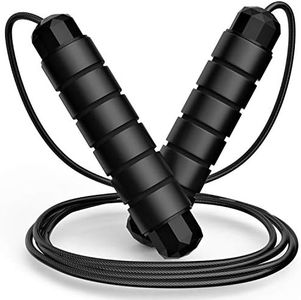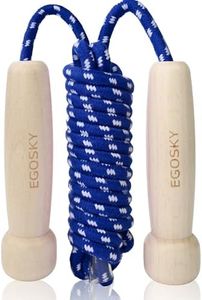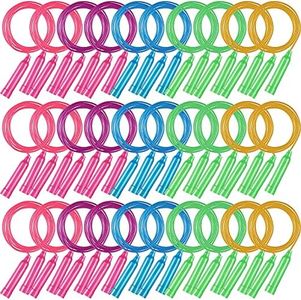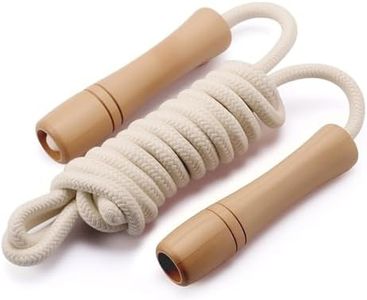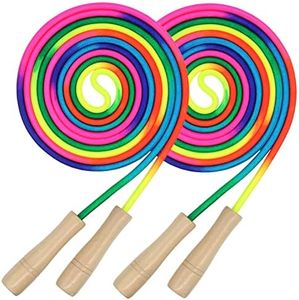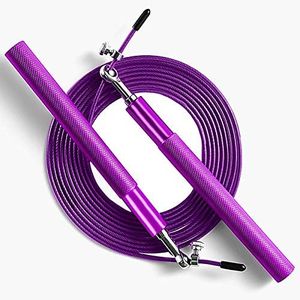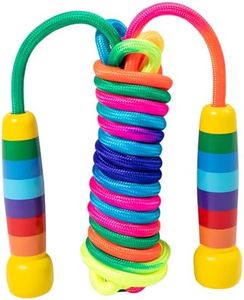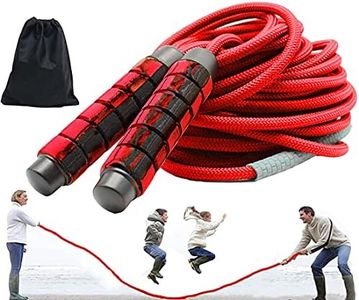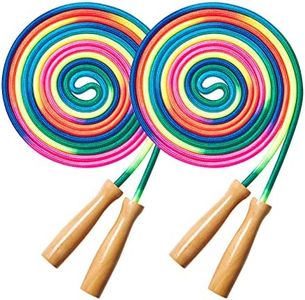We Use CookiesWe use cookies to enhance the security, performance,
functionality and for analytical and promotional activities. By continuing to browse this site you
are agreeing to our privacy policy
10 Best Skipping Rope For Kids
From leading brands and best sellers available on the web.Buying Guide for the Best Skipping Rope For Kids
Choosing a skipping rope for kids is a great way to encourage physical activity, coordination, and fun. The right skipping rope can make the experience enjoyable and safe, helping kids learn new skills and stay active. When selecting one, it’s important to look at several features that affect comfort, usability, and durability. Let’s go through the most important specs and how to think about them.Length of the RopeThe length of the skipping rope is crucial because it dramatically affects how easy and safe it is to use. If a rope is too long, it may be difficult for kids to swing efficiently; too short, and it might catch on their feet. Skipping ropes usually come in ranges or can be adjusted, with typical lengths for kids starting around 6 to 8 feet. For younger or shorter children, a shorter rope gives them better control, while older or taller kids may need something longer. To find the right length, have the child stand on the middle of the rope and lift the handles—ideally, the handles should reach up to their armpits. Adjustable ropes are a great choice to allow for growth or sharing among siblings.
Handle Material and GripHandles play a big role in comfort and control. Handles may be made of plastic, foam, or rubber, and each material changes the feel and grip in a child’s hand. Foam and rubber handles are comfortable and non-slip, good for long play sessions or sweaty hands. Plastic handles are lightweight but may be less comfortable if gripped tightly for a long time. If your child is likely to use the rope for extended periods or has smaller hands, look for ergonomically-shaped, cushioned handles to reduce slipping and provide comfort.
Rope MaterialThe rope itself can be made from a variety of materials, each with its own pros and cons. Common materials include fabric (like cotton), PVC (plastic), and beaded ropes. Fabric ropes are soft and usually slower, which is helpful for beginners, but they may wear quickly if used on rough surfaces. PVC ropes are durable, fast, and better for outdoor use, but they can sting if they hit bare skin. Beaded ropes are tough, slower, and create a rhythmic sound, helping kids pace themselves. Choose fabric or beaded for beginners and practice, while PVC is ideal for more active use or outdoor skipping.
AdjustabilitySome skipping ropes can be adjusted for length, while others come in a fixed size. An adjustable rope is handy for growing children or families with multiple kids, as you can tailor the rope to the child’s size or swap between users. Make sure the adjustment mechanism is simple and safe—usually, this involves pushing the cord into the handle and securing it, with excess length trimmed or tucked away. If you’re buying for a specific child and don’t expect them to share or grow much, a fixed-length rope matched to their size is also suitable.
Weight of the RopeThe weight of the rope affects how easy it is to turn and control. Lightweight ropes are easier for smaller children and beginners, enabling them to master the timing and rhythm without extra effort. Heavier ropes can help build strength and coordination but might be frustrating or tiring for young kids. If your child is very young or new to skipping, stick to lighter ropes—they’re easier to start with and less likely to cause accidental bumps or bruises.

